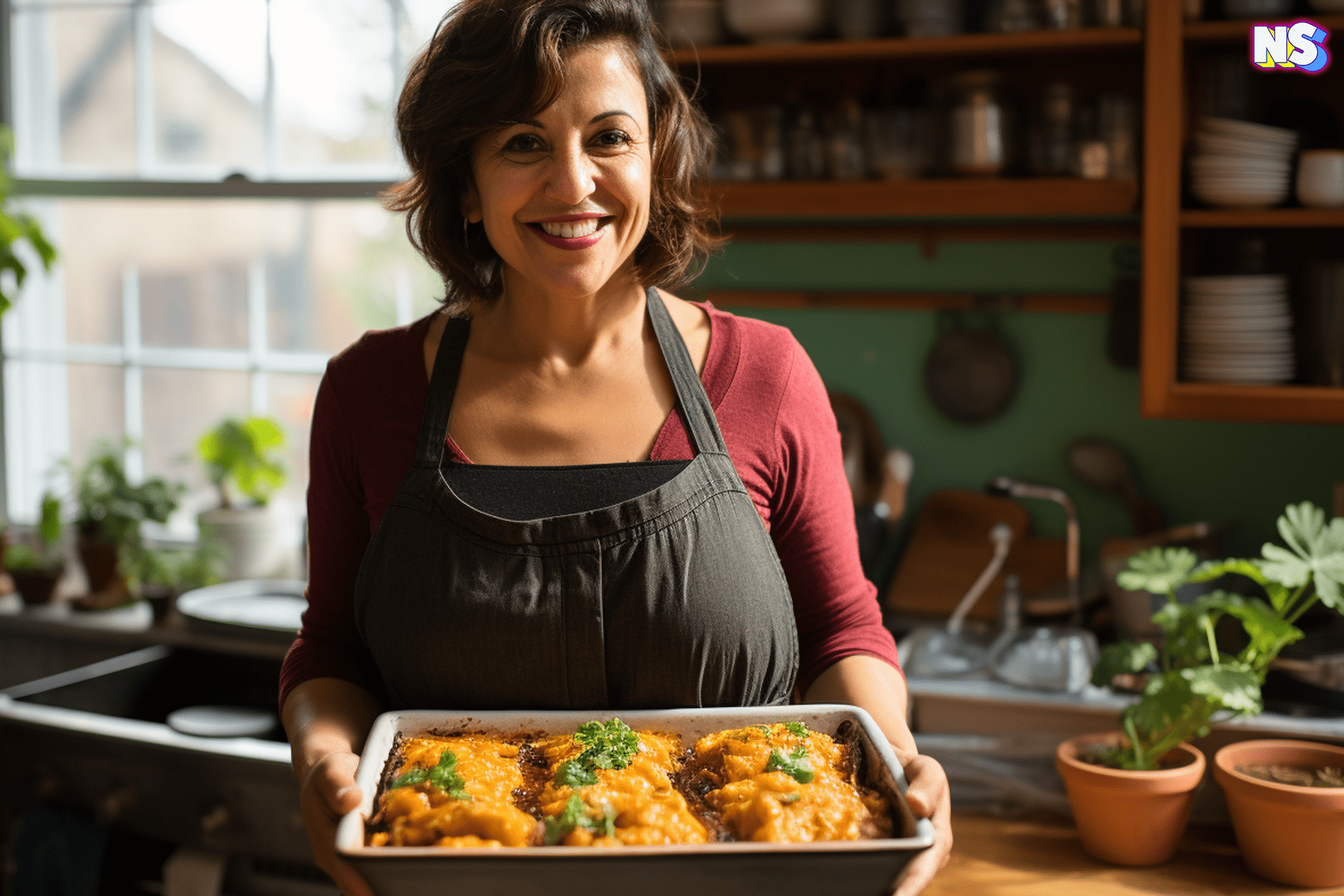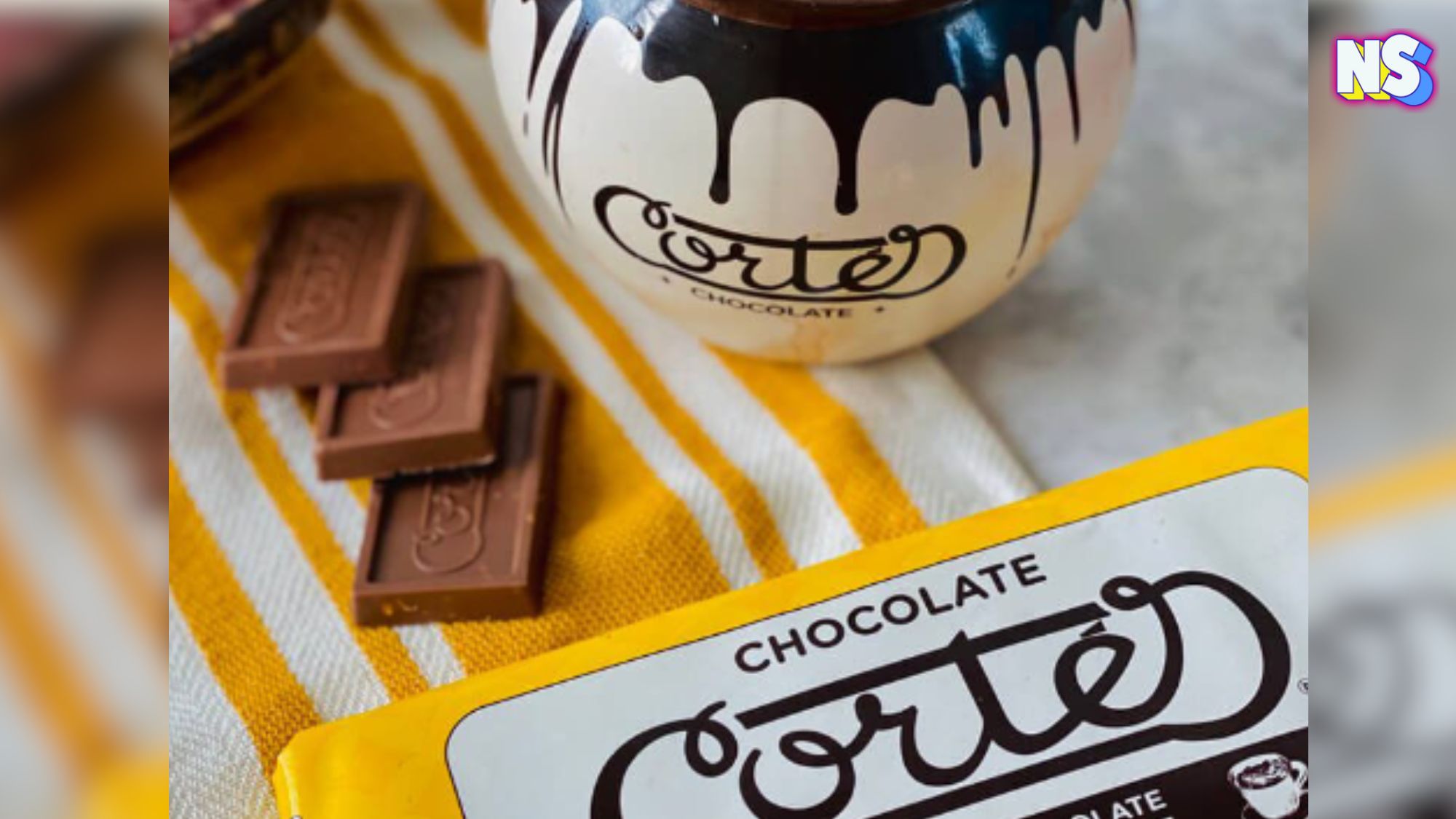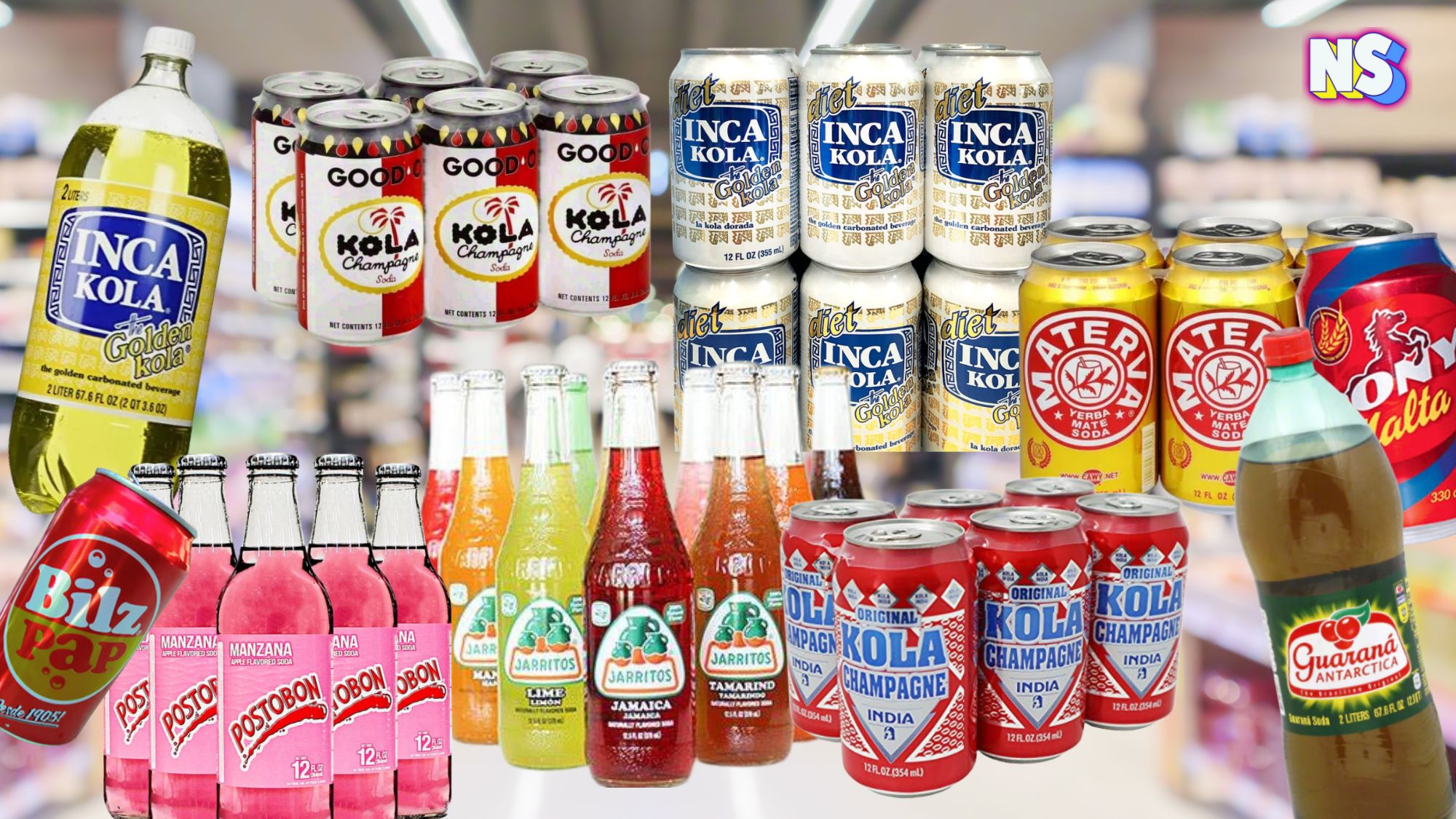Image by Nuestro Stories
With the arrival of fall, comes American football, cooler temperatures (even in Miami, sometimes), and comfort food. And nothing is more comforting than a hearty serving of pastelón.
Ah, yes, the pastelón, a timeless Puerto Rican and Dominican Republic culinary delight, consisting of layers of delicately sliced plantains, seasoned ground beef, and a generous topping of cheese. Picture it as Latin America’s answer to the ideal casserole for sharing at potlucks or family gatherings.
Pastelón, usually served as a main course, just like an Italian lasagna or a Greek moussaka, is a flavorful dish that showcases the influences of both African and Spanish cuisines in the Caribbean.
It’s often associated with celebrations because it’s a dish that can bring people together. Then again, with each family passing down their own cherished recipe through the generations, it’s a dish that can tear people apart. In a culinary way.
“ … my husband and I came together over our first dish of pastelón. As a native Puerto Rican, he argued that my version ‘wasn’t the real deal.’” Marta Rivera writes in her article Pastelón (Puerto Rican Plantain “Lasagna”), for Simply Recipes. “It was as real to me as his attitude, so I defended my version tooth and nail!”
Pastelon’s Origins
The history of pastelón is rooted in the culinary traditions of the Caribbean, particularly in Puerto Rico and the Dominican Republic. This dish has evolved over time, reflecting the cultural influences and ingredients available in the region.
The culinary history of these Caribbean islands is deeply influenced by the blend of African and Spanish cultures and pastelón is no exception. A representation of this fusion, the use of plantains and the layering technique in a pastelón are reminiscent of African cooking traditions, while the seasonings and preparation methods show the influence of Spanish cuisine.
Plantains, a key ingredient in pastelón, are a well-known staple in Caribbean cuisine. Ripe plantains, when sliced and fried, add the sweet and caramelized flavor to the dish.
Breaking Down Pastelón’s Layers
While the specific preparation can vary, here’s a general idea: Pastelón typically features layers of ripe plantains. Plantains, of course, are similar to bananas but larger and starchier. In pastelón, they are often sliced and fried until they become sweet and caramelized. Then comes the seasoned ground meat – often beef or a combination of beef and pork – serving as the filling for pastelón. The meat is usually cooked with onions, garlic, peppers, and a variety of spices to add flavor.
Cheese is another key ingredient, often layered with the meat and plantains. Some recipes call for a layer of melted cheese on top. In some variations, beaten eggs may be used to bind the layers together.
The layers are assembled in a baking dish and baked until everything is heated through and the flavors meld together.
It’s important to note that every family puts a unique spin on pastelón, making it the quintessential comfort food that’s perfect for any occasion.
Try it now with our own pastelón recipe, from the Nuestro Stories kitchen to yours.
Pastelón, The Caribbean Lasagna
2 tablespoons olive oil
1 red onion, medium size, chopped
3 cloves garlic
1 cup tomato sauce
1 green pepper, chopped
1½ teaspoons salt , or more, to taste
½ teaspoon pepper , or more, to taste
1 sprig cilantro, chopped
1 pound ground beef (preferably ground round) or ground turkey
1 teaspoon adobo seasoning blend
1½ teaspoons sazón flavoring blend, store-bought or homemade, optional
1 red onion, minced (about 1 cup)
4 ripe plantains, about 3 to 3 1/4 pounds
2-3 cups Cheddar, or Mozzarella cheese (or a good 3 cheese blend will also work)3 large eggs
1 Large can of green beans (optional)
Directions:
- Preheat the oven to 350°F:
- Grease a casserole dish (10×10 for a thicker pastelón) (9×13 casserole dish for a thinner pastelón) with nonstick cooking spray or butter.
Cut the plantains
- Cut off both ends from the plantain. Remove and discard the peel.
- Slice each one in three parts down the length . Set aside.
Fry the plantains
In a large skillet, heat the vegetable oil to 300°F over medium heat. Line a plate with paper towels to drain the plantains after frying.
Place four or five slices of plantains into the oil and fry for about 1 1/2 minutes on each side, or until the plantains have a browned slightly. Remove from the skillet to the paper-lined plate to drain. Continue frying the remaining plantains.
Cook the beef
Return the pan to the stove and heat over medium-high heat. Add the ground beef and season with the adobo and sazón.
Continue to cook the meat, breaking it up into crumbles, for 6 minutes or until browned. Drain the meat by pouring it into a colander, but leave a bit of the grease in the pan to cook the vegetables.
Cook the vegetables
Return the empty pan to the heat and cook the onions, bell pepper, and recaito for 3 minutes or until glossy. Add the olives and dried oregano, and cook for 2 more minutes.
Finish the filling
Mix the ground beef to the pan with the vegetables, and the tomato paste, and stir to combine. Bring the mixture to a simmer, then remove the pan from the heat.
Assemble the pastelón
Cover the bottom of the casserole dish with a single layer of the fried plantain strips. Spoon the ground beef mixture onto the plantains. Top with 1/2 cup of shredded cheese. Repeat with another layer of plantains, meat, and cheese (reserve the remaining 1 cup of cheese). Top with a final layer of plantains.
Add the egg layer
In a small bowl, whisk together the egg whites and a pinch of salt until frothy. Mix with the yolks and pour this mixture over the plantains.
Bake the pastelón, uncovered, for 25 minutes
Remove from the oven and top with the remaining cup of cheese. Return the dish to the oven and cook for an additional five minutes, until the cheese has melted. Remember everything here is already cooked it’s just to keep everything together.
Cool and serve
Remove the pastelón from the oven. Allow it to cool for at least fifteen minutes before slicing and serving, It helps maintain its shape when sliced.
Leftovers can be stored, covered, in the refrigerator for up to three days. To reheat, cut a portion and place either in the microwave or the oven until warmed through.





